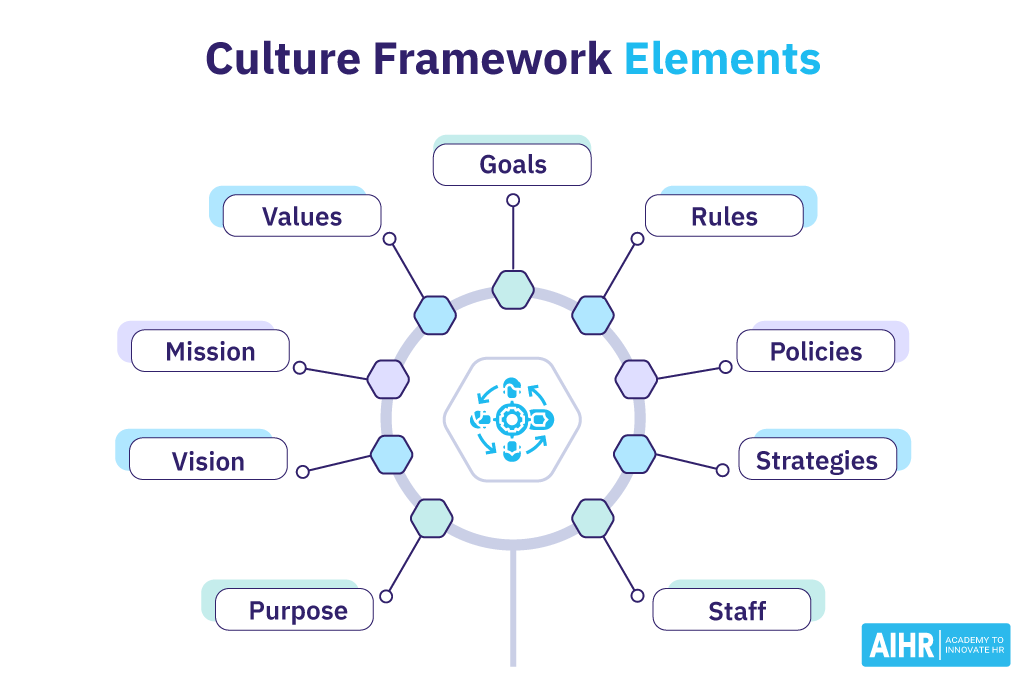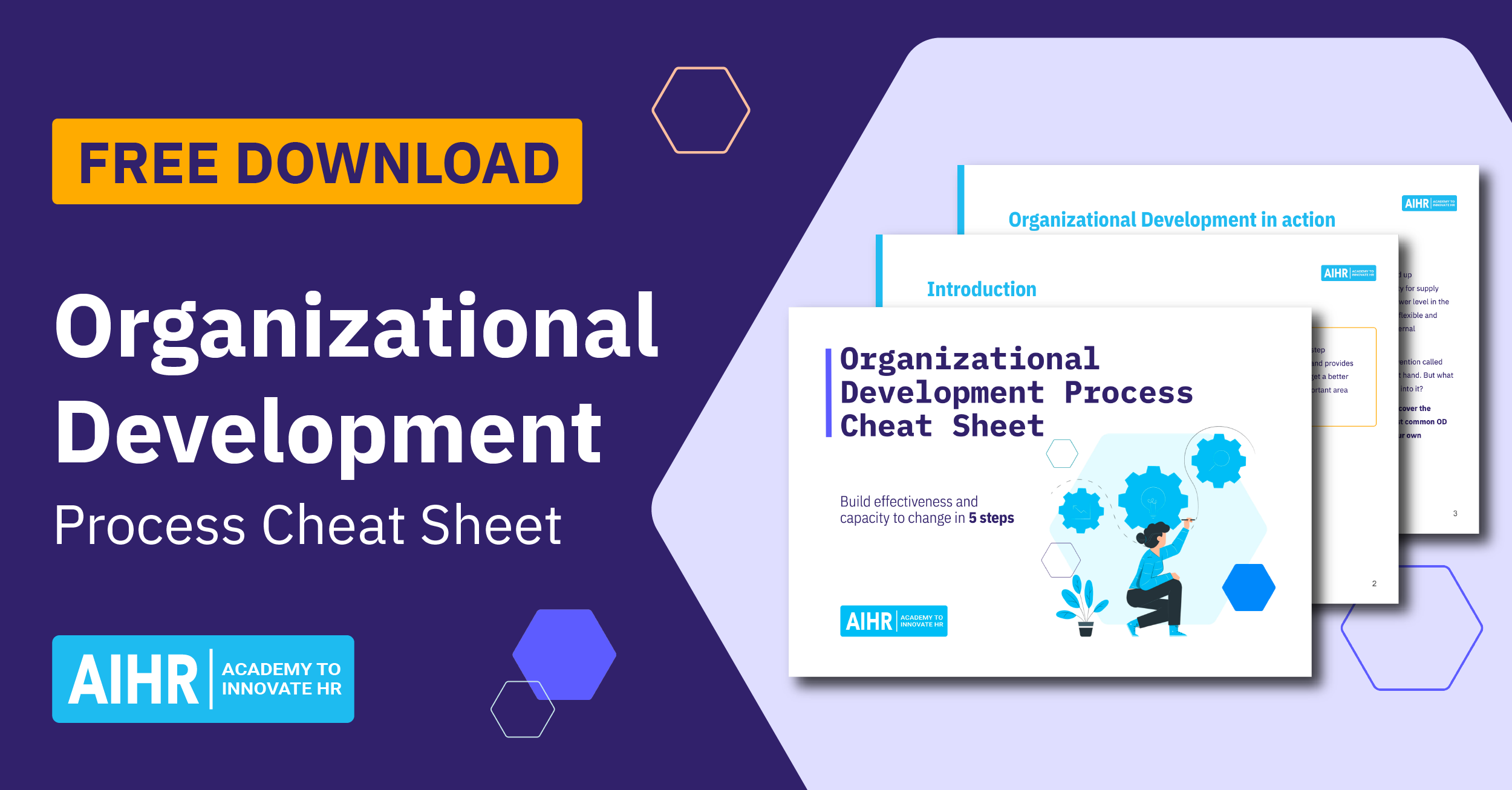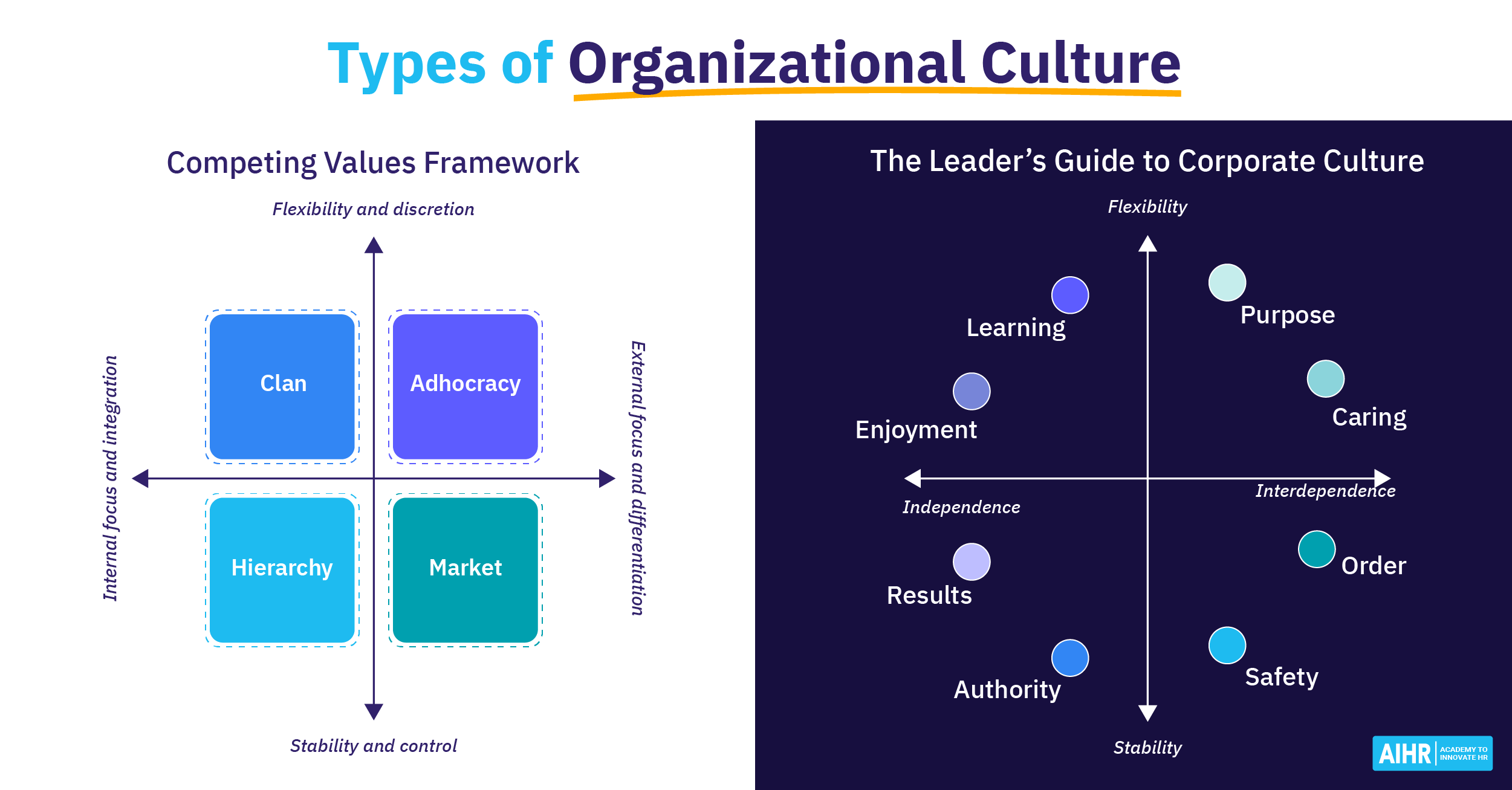Culture Framework
What is a culture framework?
A culture framework (or culture model) is a description of the key areas that will define, influence, and shape an organization’s culture. Typical elements of a culture framework will include a company’s:
- Purpose
- Vision
- Mission
- Values
- Goals
- Rules
- Processes and Policies
- Strategies
A framework helps the company to intentionally create the culture that will deliver on the organizational goals.

Why use a culture framework?
A culture framework helps start and frame the culture conversation and define the steps needed to go from the current to the desired organizational culture. It can also help embed culture into your company more meaningfully so that it goes from being conceptual to something tangible that can be seen and put into action.
Culture is equally as important as strategy when it comes to the long-term success of any organization. Unfortunately, many companies fail to give their culture the attention it needs, which leads to a culture developing on its own, potentially moving away from the desired culture that the leadership wants to instill within the organization
A toxic company culture can have a huge impact on the HR department’s ability to attract, engage and retain top candidates who align with the values and mission of the company and contribute towards organizational goals.
What are different cultural frameworks?
There are many culture framework models; below are the four most popular ones:
1. The Competing Values Framework
Created in 1983 by Robert Quinn and John Rohrbaugh, this framework helps organizations define forces within the business that either promote or inhibit certain behaviors. This framework provides organizations with an understanding of how culture influences organizational performance and effectiveness
Companies deal with two elements when working towards greater effectiveness. The first is focus, where some companies are more effective when focussing on internal processes, while others are more effective when maintaining an external positioning. The second element is stability, where some organizations are efficient when they show flexibility and are adaptable, while others show efficiency when they have high levels of control and stability.
Cameron and Quinn identified four types of organizational culture:
- Adhocracy culture: The dynamic, entrepreneurial Create Culture.
- Clan culture: The people-oriented, friendly Collaborate Culture.
- Hierarchy culture: The process-oriented, structured Control Culture.
- Market culture: The results-oriented, competitive Compete Culture.
2. Corporate culture model: The McKinsey 7S Framework
This model displays a mixture of seven hard and soft elements, all of which are crucial to the success of a company’s culture:
- Hard elements, such as strategy, structure, and systems are easy to map.
- Soft elements, like shared values, style, staff, and skills, are more challenging to define because they constantly evolve. Softer elements have a stronger impact on the business.
All seven elements can be mapped out and then used to determine the potential effect of a change. For example, how would a shift in strategy shape performance? How would an upgrade in technology systems disrupt a team?
3. Corporate culture model: The cultural iceberg model
This model is based on the work of Edgar Schein. The model mirrors an iceberg and contains both visible and invisible aspects. The visible portion includes a company’s vision, mission, policies, and external presentations. The hidden portion consists of unwritten rules, relationships, employees’ needs, and status, which make up a larger and more important part of the company’s culture.
An organization can use this model to shape its culture by addressing the invisible aspects at play by answering questions like: “What do our employees need, and how is our organization currently running?” Surveys and interviews can uncover this information, and changes can then be implemented to achieve the desired results.
4. Corporate culture model: Hofstede’s model
Hofstede’s model resembles an onion and has four distinct layers for manifesting culture: values, rituals, heroes, and symbols. This model is great if you want to understand how your organizational culture is shaped, but it may be difficult to derive a plan of action from it. Therefore, this model best suits startups and companies at the beginning of their journey when building a culture.







